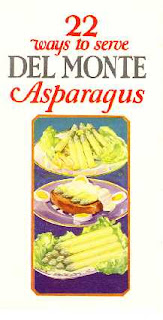Dinnerware Stands Out in Rice Promotion
 Stop reading right now if you're looking for news about rice and whether or not you'll be limited in your purchases of 25-pound bags at Sam's Club or Costco. This post is about American-grown rice, Texas rice in particular. The booklet today was published by the Texas Rice Promotion Association, a rice marketing organization located in Houston.
Stop reading right now if you're looking for news about rice and whether or not you'll be limited in your purchases of 25-pound bags at Sam's Club or Costco. This post is about American-grown rice, Texas rice in particular. The booklet today was published by the Texas Rice Promotion Association, a rice marketing organization located in Houston.Although there's no shortage of American-grown or Texas-grown rice, I've noted the increasing disappearance of the rice fields in west Houston as they are being gobbled up by developers and replaced by huge master planned communities.
Put Rice Appeal in Every Meal (undated, 34 pages) was originally priced at fifteen cents and contains 42 recipes as well as easy directions for cooking rice using a technique they called the "1-2-1 Fluff Method." Helen Corbitt is mentioned as one of the collaborators of the booklet.
The photography of the food itself is rather drab, but to me, what stands out about this booklet is the dinnerware used in the photos. The postal code of 6 determines that the booklet was published pre-1963 and I can tell by just looking at the dinnerware the general era it was from. This was the dinnerware you would have found in the department stores in the late 1950s and early 1960s. Unfortunately, my passing knowledge of vintage dinnerware identification has been crowded out by newer information in my brain pertaining to MySql, Php and the like. However, I do remember that these type booklets were once considered great "go-withs" for dinnerware collectors.
Since I can't identify the dinnerware, I'll identify the recipes.
The photo below shows One-Dish Supper Soup at the top which contains half a dozen eggs, cheese and a large can of tomatoes. Below that is Saturday's Soup made with canned tomatoes, ground beef, peas, corn and carrots. And rice, of course, that goes without saying.
 The next photo shows Veal Paprika with Rice and some Porcupine Meatballs (in this case made with tomato juice rather than the then-popular version made with canned tomato soup).
The next photo shows Veal Paprika with Rice and some Porcupine Meatballs (in this case made with tomato juice rather than the then-popular version made with canned tomato soup). This photo shows Pork Chops with Rice Creole (the pork chops are under that red stuff somewhere) on the dinner plate and Texas Hash (made with ground beef and canned tomatoes) in the bowls.
This photo shows Pork Chops with Rice Creole (the pork chops are under that red stuff somewhere) on the dinner plate and Texas Hash (made with ground beef and canned tomatoes) in the bowls. Shrimp Dugan (a pound of shrimp drowned in a quart of barbecue sauce, served over rice) is shown below along with Eggs and Rice Benedict. The traditional English Muffin is replaced by rice and served with a Mustard Hollandaise Sauce.
Shrimp Dugan (a pound of shrimp drowned in a quart of barbecue sauce, served over rice) is shown below along with Eggs and Rice Benedict. The traditional English Muffin is replaced by rice and served with a Mustard Hollandaise Sauce. This page shows Eight Boy Chicken Curry. The booklet notes that the name is taken from the number of condiments served with it. I use the bowls similar to the small ones for my pet food dishes. I like how they match my kitchen paint color.
This page shows Eight Boy Chicken Curry. The booklet notes that the name is taken from the number of condiments served with it. I use the bowls similar to the small ones for my pet food dishes. I like how they match my kitchen paint color. The top plate below shows Rice Waffles and the bowls hold Cinnamon Rice.
The top plate below shows Rice Waffles and the bowls hold Cinnamon Rice.
1-2-1 FLUFF METHOD
1. Combine 1 cup of rice, 2 cups of water, and 1 teaspoon salt in a 3-quart saucepan that has a tight-fitting lid.
2. Bring to a boil, stiring once or twice as water comes to a boil. Lower heat to simmer. Cover pan and cook about 14 minutes without removing lid or stirring. If rice is not quite tender, replace lid and cook two to six minutes longer. Remove from heat.
For drier rice: Fluff rice lightly with a fork, and let stand in covered pan five to ten minutes to steam dry.
For extra tender rice: Start with 1/3 cup more water and increase the cooking time four or five minutes.












